Luckily, this article serves as your ultimate guide to UV-resistant rubber. It delves into how UV rays impact rubber and guides you in selecting the right UV-resistant materials for your needs.
Keep reading to unlock this valuable knowledge!
What is UV Radiation?
UV radiation occurs naturally from the sun. Although the wavelength for UV rays is 100 – 400 nm, UVA rays with a wavelength of 315 – 400nm form most of the radiation reaching the earth. UV radiation harms human health, causing skin cancers, sunburns, and immune system damage.
Unfortunately, as UV exposure is harmful to humans, it is also detrimental to elastomers. Ozone & UV Ozone not only occurs naturally but can also be generated in instances such as outdoor enclosures which commonly house electrical equipment.
Exposure to UV can also be detrimental to the lifespan of a component and result in cracking or disintegration.
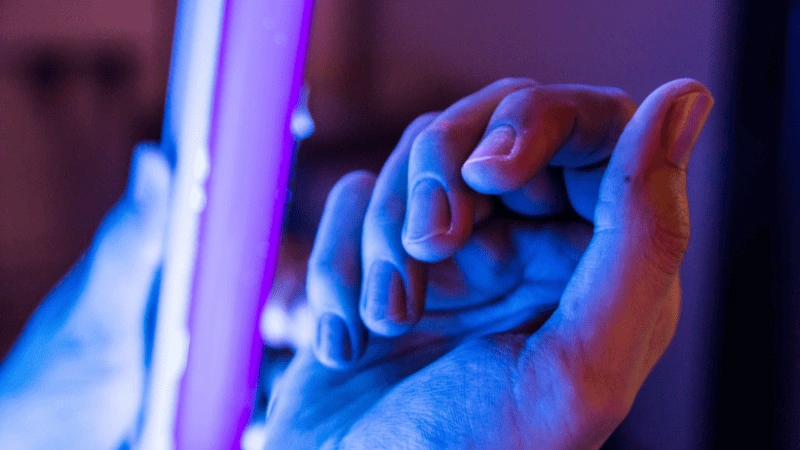
How Does the Sun Affect Rubber?
The sun emits UV radiation, which affects the properties of rubber. The UV rays attack rubber molecularly, weakening and breaking the monomer chains.
Rubber materials can be adversely affected by ongoing exposure to UV radiation, as it affects the molecular structure of the material which causes it to break down or degrade. Hence, the radiation hinders the polymerization process.
The effects of the sun on rubber include loss of flexibility and elasticity, crack formation, disintegration, and loss of moss. Other products of the sun on rubber include color fading and deterioration.
When a product or component is exposed to direct sunlight, its internal temperature can be increased to more than 60°C and this heat cycling can accelerate compression set in many materials.
A suitable material needs to be considered for outdoor applications and applications with exposure to UV or ozone.
Send Your Inquiry Now!
Quality Meets Affordability. Inquire Now for High-Quality Products at Low Volumes.
How Does UV Light Affect Physical and Chemical Changes in Rubber?
Depending on its molecular structure, it can either become hard or soft when rubber degrades. UV light changes the chemical properties of rubber in a chain hardening or chain scission process.
Chain hardening occurs when the free radicals produced by UV lights and oxygen combine, forming new cross-links. These cross-links then reduce the rubber’s flexibility and cause hardening.
The chain hardening process is peculiar to nitrile rubber and styrene-butadiene-styrene. These types of rubber were formed from the cross-linking process where polymer chains form a single molecule.
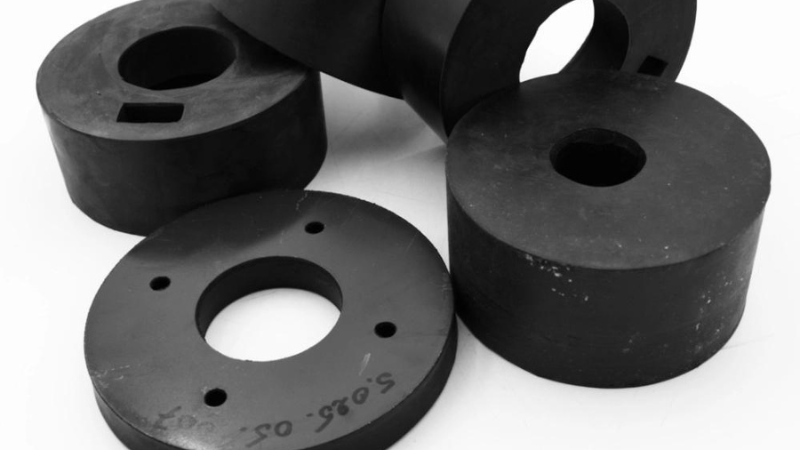
On the other hand, the chain scission process occurs in rubber compounds formed through polymerization. This process gradually degrades and softens the rubber material.
Polymerization involves the bonding of multiple monomers to create a polymer. Isoprene and natural rubbers are polymers; hence they are more susceptible to chain scission.
It is important to note that polymers like EPDM can also undergo chain scission and cross-linking.
Nevertheless, because cross-linking reactions are more dominant, there is a higher chance of the polymer hardening over time.
What is UV-resistant Rubber?
UV-resistant rubber is a rubber material resistant to the effects of ultraviolet (UV) light, including sunlight. However, exposure to UV radiation affects the molecular structure of polymers, breaking them down or degrading them. Consequently, these materials fade, lose flexibility, and disintegrate.
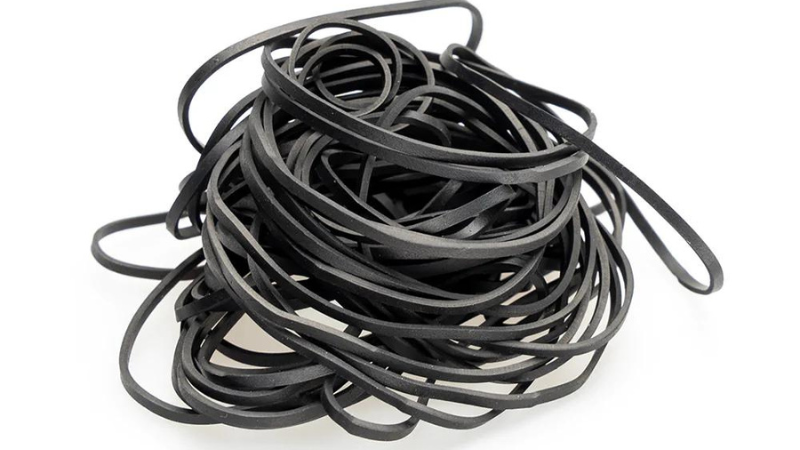
Other materials such as Buna-S (SBR), Buna-N (Nitrile), natural rubber, and synthetic isoprene break down relatively quickly in UV exposure. Silicone and EPDM rubber are two of the better UV-resistant materials that are commercially available.
Nevertheless, on exposure to direct sunlight, UV-resistant materials retain their mechanical properties, including strength, hardness, and elasticity. However, it is essential to note that not all types of rubber have UV resistance.
What are UV-resistant Rubber Benefits?
UV-resistant rubber, ideal for sun and weather exposure, boasts durability, stability, and efficiency. Keep reading to discover the essential advantages together – let’s explore!
- Weather Resistance: UV-resistant rubber is suitable for outdoor use because it can withstand UV light and ozone exposure. Consequently, outdoors, they do not lose shape, elasticity, or mechanical properties.
- Durability: the resistive properties of UV-resistant rubber make them durable. Therefore, gaskets and seals made from UV-resistant rubber save costs in the long run because they last a long time without wearing or tearing.
- Thermal stability: UV-resistant rubber also has high-temperature stability. Because there are different types of UV-resistant rubber, their thermal stability varies. Nevertheless, they are all suitable for high-heat applications.
- Rebound properties: UV-resistant rubber also has excellent tensile strength and compression resistance. Therefore, they have rebound properties after exposure to compression sets.
Send Your Inquiry Now!
Quality Meets Affordability. Inquire Now for High-Quality Products at Low Volumes.
What are the Types of UV-resistant Materials?
Although there are several types of rubber, not all are UV-resistant. Oftentimes, these situations require an elastomer with excellent chemical resistance, physical properties, and high-temperature resistance. Rubber materials that can withstand UV radiation include the following;
- Fluoroelastomer
- Polyurethane
- EPDM rubber
- Silicone rubber
- Butyl rubber
- Neoprene
- HNBR
- CSM
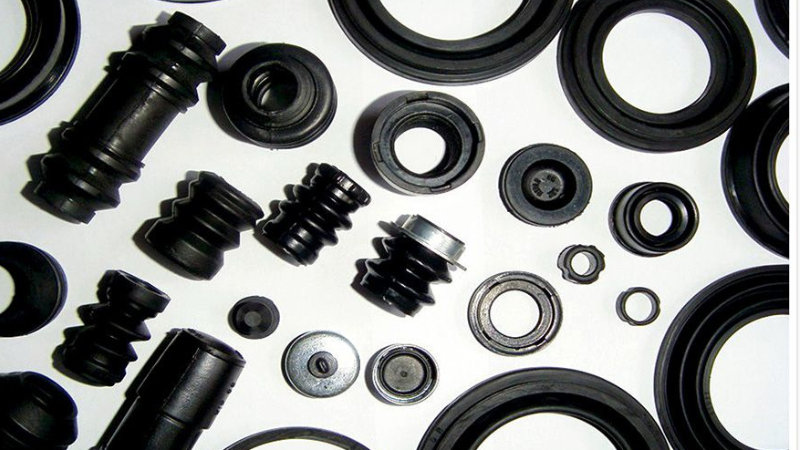
Fluoroelastomer (Viton®)
Viton is a synthetic rubber based on fluorocarbon. In addition to its UV-resistant properties, the material has excellent chemical resistance. Viton can also withstand continuous temperatures between -26 degrees C and 230 degrees C.
For intermittent use in high-temperature environments, Viton can withstand temperatures up to 260 degrees C. Other properties of Viton include its resistance to mineral oil, fuel, and synthetic hydraulic fluids.
Fluoroelastomer is used in the manufacturing process of several o-ring, gasket, and sealing solutions. Due to its chemical and physical properties, seals made from Viton are reliable. This rubber material is ideal for manufacturing automotive seals, aerospace seals, pumps, and valves.
Polyurethane
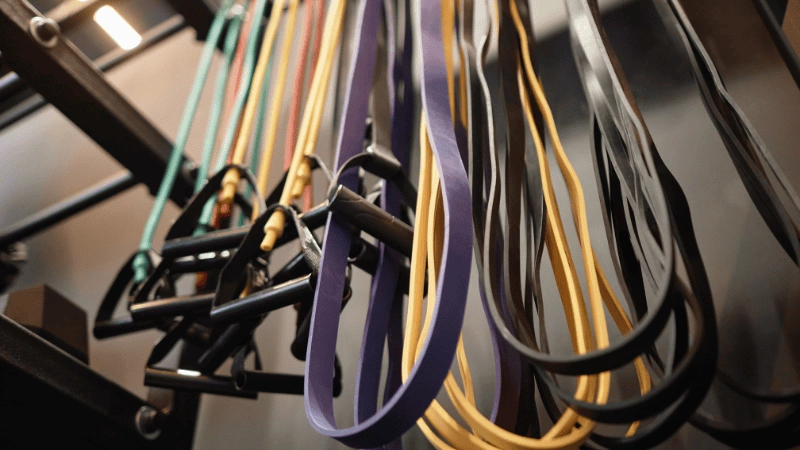
Polyurethane is a synthetic material formed from chains of organic polymers. In addition to its UV resistance, this compound has excellent tensile strength and abrasion resistance.
Furthermore, because polyurethane has excellent weathering resistance, it is suitable for outdoor applications. It can perform well even when exposed to ozone. Other properties of polyurethane include high load-bearing capacity, flexibility, and tear resistance.
Furthermore, polyurethane works well in temperatures between -30 degrees C and 110 degrees C. The material is an excellent electrical insulator and bonds firmly to several materials. Polyurethane is also stable in water, grease, and oil.
Polyurethane helps produce elastomers, sealants, coatings, and adhesives. They are also suitable for ball bearings, car wheels, pulley wheels, and conveyor rollers.
EPDM Rubber
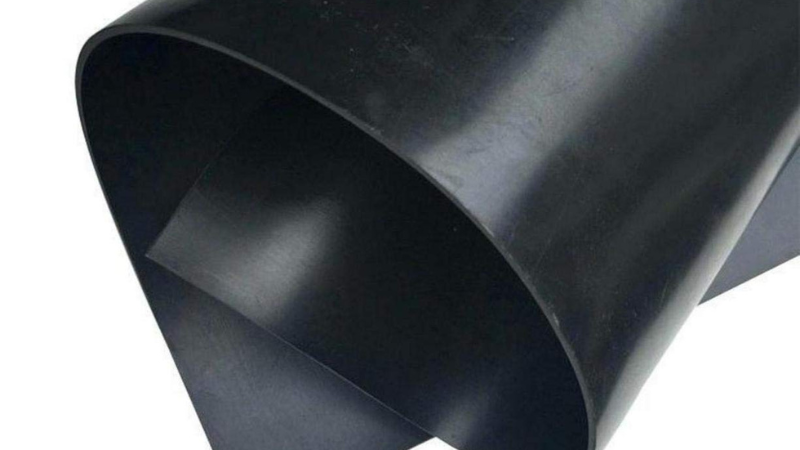
EPDM is short for ethylene propylene diene monomer. EPDM rubber is resistant to heat and UV light and has excellent ozone resistance.
Furthermore, EPDM rubber is resistant to acids, chemicals, polar substances, and steam. It also has good chemical resistance, The temperature range of EPDM rubber is between -40 degrees C to 121 degrees C for continuous heat application.
For intermittent high-temperature exposure, EPDM rubber can withstand a maximum temperature of 135 degrees C.
Foam EPDM rubber is a very weather-resistant raw material, making this foam rubber highly resistant to UV radiation and ozone. EPDM rubber is highly flexible and durable.
It is therefore used to manufacture window and door seals in vehicles. Furthermore, these synthetic rubber compounds help make cooling system hoses and non-slip coatings.
Silicone

Silicone is another UV-resistant synthetic rubber. Silicone has excellent heat and ozone resistance, high dielectric stability, and resistance to extreme temperatures and many oils, chemicals, and solvents.
Silicone works well in high and low temperatures. The material has very good flexibility at low temperatures and is highly resistant to withstand temperatures between -55 degrees C and 204 degrees C.
Other properties of Silicone include its thermal and electrical insulation, high tensile strength, and excellent resistance to compression sets.
Silicone rubber compounds are widely used to manufacture O-rings, gaskets, food-grade seals, and electrical insulators.
Butyl Rubber

Butyl rubber is synthetic and has excellent weather resistance, especially to direct sunlight. In addition to high-temperature resistance, this material has good chemical resistance, abrasion resistance, tear resistance, and water resistance.
Therefore, butyl rubber is suitable for applications with steam or ozone exposure. Furthermore, butyl rubber is resistant to gas; the material is biocompatible and is resistant to alkaline and acidic chemicals.
The butyl rubber has a wide temperature range of UV rubber is between -45 degrees C and 121 degrees C. At higher temperatures, butyl rubber has diminishing damping characteristics.
Butyl rubber is useful in applications requiring low gas permeability. Therefore, this material is used to manufacture tubeless tires, gaskets, o-rings, and hoses. It also makes gas masks and waterproofing materials like tanks and pond liners.
Neoprene
Neoprene is another UV-resistant synthetic rubber. The material is waterproof and also resistant to corrosion. Furthermore, because of its excellent thermal stability, neoprene remains flexible over a continuous temperature between -40 degrees C and 120 degrees C.
Neoprene also has good chemical resistance and fuel resistance. In addition, the material is durable and has good tear resistance.
Neoprene is used to produce gaskets, springs, wire and cable, and flexible mounts.
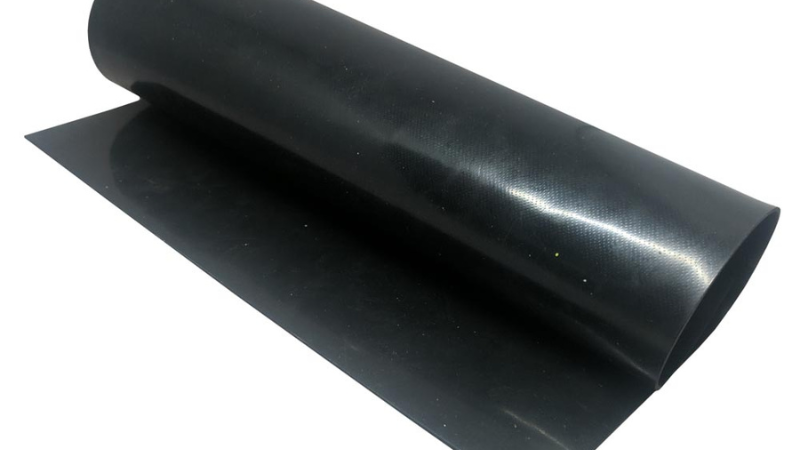
HNBR
HNBR is short for hydrogenated nitrile rubber. Those rubber compounds have excellent physical and chemical properties making them suitable for several applications. Although HNBR has UV resistance, it is not as resistant as Silicone or Viton to UV rays.
Other good mechanical properties of HNBR include its good compression set, tensile strength, and abrasion resistance. Furthermore, this synthetic polymer can withstand a wide temperature range between -30 degrees C and 150 degrees C.
HNBR is compatible with hot and cold water. It is also suitable for use with fuels, acids, alkalis, and alcohol. HNBR is helpful in the automotive industry and ideal for applications like gaskets and seals in the oil and gas industry.
CSM
CSM, also known as Hypalon, is a synthetic polymer with excellent UV and weather resistance. The material is acid- and alkalis-resistant, making it an ideal material for chemical processing applications.
Furthermore, CSM has excellent abrasion resistance properties and low gas permeability. The temperature range ideal for CSM is between -40 degrees Celsius and 121 degrees Celsius.
CSM is suitable for use in electrical applications. In addition, the material is used to manufacture static seals, wire and cable, and automotive components.
Send Your Inquiry Now!
Quality Meets Affordability. Inquire Now for High-Quality Products at Low Volumes.
What is the Best UV-resistant Rubber?
After examining the properties of the different UV-resistant rubber available on the market, it is glaring that they differ. For example, some rubber can withstand higher temperatures, while some are more resistant to harsh chemicals and abrasion.
Consequently, there is no definitive best. Instead, the best UV-resistant rubber will be the one that most suits your application at minimal costs.
Where are UV-resistant Rubber Materials Used?
The extent of possible degradation due to UV exposure depends on whether the part will be partially or constantly exposed to the sun.
UV-resistant materials are not usually needed for indoor applications. UV-resistant rubber is used in several applications involving sunlight or weather exposure.
This type of rubber can withstand the effect of UV light while maintaining its physical and chemical properties. Some UV-resistant rubber applications include o-rings, seals, gaskets, and hoses. The rubber is also used to manufacture car wheels, window and door seals, pumps, and valves.
Other applications of UV-resistant rubber include gas masks, tubeless tires, ball bearings, and conveyor rollers.

What Protection Does UV-resistant Rubber Offer against the Sun’s Rays?
The sun emits UV rays that attack carbon bonds in rubber. Therefore, organic rubber materials like natural rubber and nitrile rubber are prone to ozone and UV rays attack. This is due to the carbon bonds in their polymer structure.
On the other hand, UV-resistant rubber like EPDM, Silicone, and Viton have saturated backbone structures. These structures, consequently, protect the rubber from the effect of the sun’s rays.
Therefore, these rubber materials retain their physical and chemical properties even with prolonged exposure in outdoor applications.
Send Your Inquiry Now!
Quality Meets Affordability. Inquire Now for High-Quality Products at Low Volumes.
Is Natural Rubber UV-resistant?
No. UV radiation breaks down and degrades the molecular structure of natural rubber. Consequently, there is a change in the physical and chemical properties of the material. Furthermore, UV rays crack the rubber, weakening it and causing it to lose flexibility.
The extent of degradation of natural rubber due to UV exposure depends on the size of exposure and the part exposed to the radiation source.
Is Vulcanized Rubber UV-resistant?
Vulcanized rubber is more robust than natural rubber. This type of rubber is produced by treating rubber with sulfur, accelerators, and activators to improve its properties.
Consequently, the vulcanization process gives rubber enhanced tensile strength, excellent weather resistance, and elasticity.
However, although vulcanized rubber has more UV resistance than natural rubber, it does not possess as many UV-resistant properties as other UV-resistant rubber materials.
Are All Synthetic Rubber UV-resistant?
The UV-resistant rubber materials discussed earlier are all synthetic rubber. Nevertheless, this does not mean that all synthetic rubber materials are UV-resistant. For instance, nitrile and styrene butadiene rubber (SBR) are synthetic but not UV-resistant.

Nevertheless, these rubbers possess properties that make them suitable for manufacturing hoses, belts, tubings, tires, and electrical components.
Nitrile Rubber, for instance, offers excellent resistance and is versatile and reliable. The rubber has excellent compression set resistance and is relatively resistant to crude oil, petroleum oils, and water.
Consequently, nitrile rubber is suitable for general-purpose applications, including manufacturing V belts, oil seals, dynamic hydraulic seals, and gaskets.
Furthermore, SBR is durable, flexible, and does not shrink quickly. This rubber is resistant to water and has high abrasion. SBR is helpful in several applications, including manufacturing automotive parts, car tires, and shoe soles.
General Properties of Different Types of Rubber
The table below contains an overview of the most common types of rubber compounds’ ability to withstand UV light and weathering and to hold up outdoors. Consequently, it is easier to choose one that suits your application.
| Materials | Hardness (Shore A) | Acid resistance | Oil resistance | Abrasion resistance | Temperature resistance (degrees C) | UV resistance |
|---|---|---|---|---|---|---|
| Viton | 60-90 | Excellent resistance to mineral acids | Good to excellent | Excellent | -23 to 230 | Excellent |
| Polyurethane rubber | 80 – 95 | Good resistance to dilute acids | Excellent | Excellent | -30 to 110 | Good |
| EPDM | 30 – 90 | Good resistance to dilute acids, alkalis, and ketones | Poor | Good | -40 to 121 | Excellent |
| Silicone | 20 – 80 | Good resistance to acids except for sulphuric acid and hydrofluoric acid | Excellent resistance to oil at elevated temperatures | Good | -55 to 204 | Excellent |
| Butyl rubber | 40 – 90 | Excellent resistance to acids, alkalis, and gases | Poor | Excellent | -45 to 121 | Good |
| Neoprene | 20 – 95 | Good resistance to few mineral acids and organic acids | Excellent | Good | -40 to 120 | Good |
| Neoprene | 20 – 95 | Good resistance to few mineral acids and organic acids | Excellent | Good | -40 to 120 | Good |
| HNBR 40 – 100 Excellent resistance to dilute acids Excellent Good -30 to 150 Fairly good | 40 – 100 | Excellent resistance to dilute acids | Excellent | Good | -30 to 150 | Fairly Good |
| CSM | 40 – 95 | Very good resistance to oxidizing acids | Good | Excellent | -40 to 121 | Excellent |
| Natural rubber | 30 – 95 | Good to inorganic acids | Poor | Good | -29 – 104 | Poor |
| Nitrile rubber | 20 – 95 | Good to dilute acids | Excellent | Excellent | -56 – 121 | Fair |
| SBR 30 - 95 Good to dilute inorganic acids Poor Excellent -51 – 121 Poor | 30 - 95 | Good to dilute inorganic acids | Poor | Excellent | -51 – 121 | Poor |
How to Test The UV Resistance of Rubber?
UV light can degrade, crack, or fade rubber. Therefore, testing the resistance of rubber to UV radiation helps to know the extent to which that rubber can withstand UV rays without compromising integrity.
When testing rubber, a 96-hour concentrated exposure to UV rays helps to know the UV stability. Rubber that can withstand this test period is then classified as UV-resistant.
During testing, place rubber samples in a UV testing cabinet and expose them to UV rays for an extended period. Xenon arc testers can generate UV light that closely replicates sunlight.
It is best to examine the samples at intervals, for example, two hours, and carefully measure and record the results.
Send Your Inquiry Now!
Quality Meets Affordability. Inquire Now for High-Quality Products at Low Volumes.
Disadvantages of UV-Resistant Materials
Although all UV-resistant rubber has advantages, it also has disadvantages. These disadvantages include the following;
Viton: this rubber material is incompatible with ketones, organic acids, amines, and ester solvents. In addition, although Viton is suitable for high-heat applications, the material is not flame-resistant. Under excessively high temperatures, the rubber material decomposes and releases hydrogen fluoride.
Unfortunately, hydrogen fluoride is toxic and irritates the respiratory tract. Furthermore, in shallow temperatures, Viton hardens and becomes inflexible.
Polyurethane: this rubber is not water resistant, making it less durable. In addition, they are flammable at high temperatures, releasing toxic fumes that harm human health and the environment.
Another disadvantage of polyurethane is that most solvents attack them. In addition, isocyanates, a poisonous material, are involved in producing polyurethane.
EPDM: this type of rubber is inert, making it difficult to adhere to. In addition, EPDM rubber has relatively poor resistance to non-polar solvents and petroleum-based fuels. Consequently, this rubber is unsuitable for petrochemical applications.

Silicone: This rubber is costly because of its versatility in several applications. Another disadvantage is its poor tear strength. In addition, Silicone may react poorly on exposure to gasoline or alcohol. Exposure to sulfur or latex may also inhibit the curing of Silicone.
Butyl rubber: this rubber is not resistant to petroleum oils. In addition, butyl rubber is difficult to process. Therefore, it is costly.
Neoprene: although neoprene is a versatile material, it is costly. Other disadvantages of neoprene include its poor resistance to certain hydrocarbons, oxidizing acids, esters, and ketones. In addition, this rubber material is not water resistant and not suitable for use as an electrical insulator.
HNBR: the disadvantages of HNBR include its poor resistance to polar organic solvents and aromatic oils. The rubber material also has poor flame resistance and poor electrical properties.
CSM: Hypalon has poor flexibility at low temperatures. The material also has poor resistance to compression sets, making it unsuitable for dynamic sealing applications. Furthermore, CSM is unsuitable for automotive applications because of its poor fuel resistance.
What are the Other Causes of Rubber Deterioration?
Besides UV radiation, other agents degrade rubber. For instance, high temperatures, high humidity, and direct physical forces degrade rubber. Other rubber-degrading agents include stress, pollutant gases, and oxygen.
It is important to note that these agents do not degrade all rubber materials to the same extent. Some rubber materials have better resistance than others.
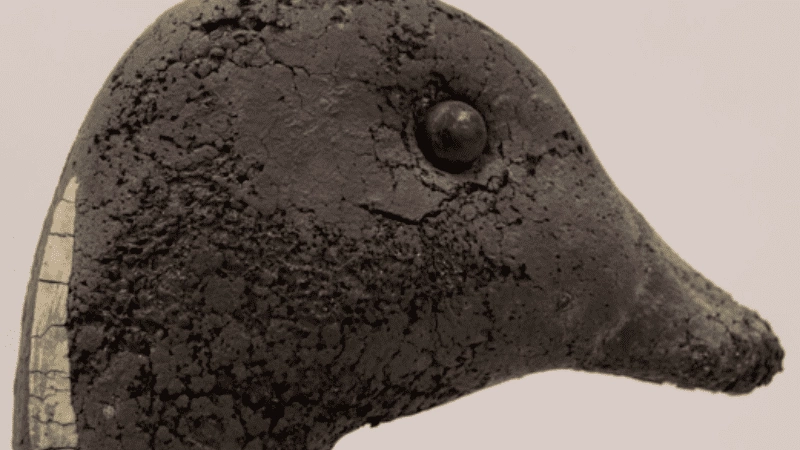
How to Prevent Rubber Deterioration?
Regardless of the material, rubber deteriorates over time. The most common causes of deterioration include UV light, oxygen, and chemical exposure. Exposure to these factors can cause the contraction and expansion of rubber chains, leading to damage.
Fortunately, you can slow down deterioration by keeping the rubber seal and product in a cool, dry, and oxygen-free space. If your rubber seal is already showing signs of damage, you can restore it by;
- Cleaning the area around the seal. Ensure the site is free of dirt and water
- Scrubbing off hardened debris
- Use a rubber conditioner to revitalize the seal. Ensure you follow the instructions for applying the conditioner
- Use a file to rub off damaged areas and then reapply the conditioner to restore the seal
Send Your Inquiry Now!
Quality Meets Affordability. Inquire Now for High-Quality Products at Low Volumes.
What Factors Should Be Considered When Choosing UV-resistant Rubber?
This article has explored eight types of UV-resistant rubber. Although they all have resistive properties to UV rays, it is essential to note that they are not all suitable for the same applications.
For instance, UV-resistance levels vary for each type of rubber. Therefore, let’s take a look at other factors to consider before choosing UV-resistant rubber.
1. Degree of exposure
Exposing your rubber constantly to the sun is different from occasional exposure. The degree of exposure is critical in determining the best UV-resistant rubber for your application.
2. Rubber thickness
Not all types of UV-resistant rubber are available in the same thickness. If you need a much thicker rubber for your application, you must choose one that matches your specifications.
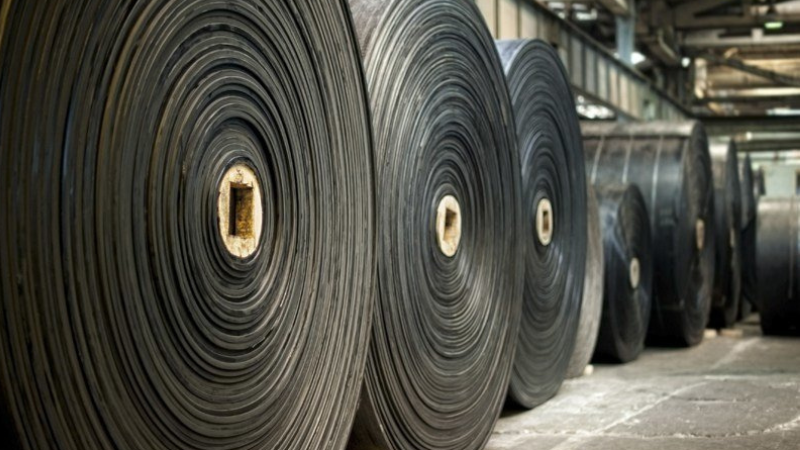
3. Hardness
Hardness is also known as shore durometer. Rubbers with small durometers are not as hard as those with a broader durometer range.
However, it is essential to consider hardness before choosing a UV-resistant rubber because this property is necessary for pressure and compression applications.
It is important to note that different scales measure rubber materials’ hardness. For example, the Shore A hardness scale measures the hardness of rubber. The measurement ranges from soft and flexible to complex with no flexibility.
4. Temperature
All UV-resistant rubber has a specific temperature range. When choosing a UV-resistant rubber, consider your application’s temperature and the rubber’s internal temperature range.
If your application’s temperature exceeds your selected rubber range, the rubber will melt and burn. Of all UV-resistant rubber, Silicone has the highest temperature range.
5. Oil resistance
Although not all applications require oil, it is still essential to consider the oil resistance of your UV-resistant rubber. This is because oil can severely degrade rubber.
However, oil-resistant rubbers are especially useful in the automotive industry. Examples of oil-resistant rubber include Neoprene and Viton.

6. Abrasion resistance
Does your application require mechanical action, including scraping or rubbing? If yes, choosing UV-resistant rubber with excellent abrasion-resistant properties is critical. However, it is essential to note that not all rubber types possess the same level of abrasion resistance.
7. Acid-resistance
Although not all applications require acids, it is essential to consider acid resistance before choosing a UV-resistant rubber. This is because acid attacks almost all types of rubber.
And if your application requires highly acidic solutions, always consider rubber resistance. For instance, Viton is resistant to some caustic chemicals but is not immune to ethyl ethers and acetone.
Send Your Inquiry Now!
Quality Meets Affordability. Inquire Now for High-Quality Products at Low Volumes.
Conclusion
UV rays have devastating effects on rubber. The light causes physical and chemical changes, including a loss in mass. However, UV-resistant rubber can withstand weather conditions. Therefore, you can use them in outdoor applications.
Silicone, EPDM, and Viton are some of the best UV-resistant materials on the market. Before choosing a rubber material that suits your application, consider the hardness, abrasion, oil, and acid resistance.
Why Buy Rubber Parts from Hongju?
Hongju Silicone is an expert in producing rubber parts for various functions. We are at your service if you want to create customized gaskets, seals, washers, or rollers. You can choose from a wide and broad range of UV-resistant materials to meet your rubber molding requirements.
Furthermore, we provide excellent sealing solutions at competitive prices. Contact us today for further assistance with custom gaskets for applications requiring UV and ozone resistance.